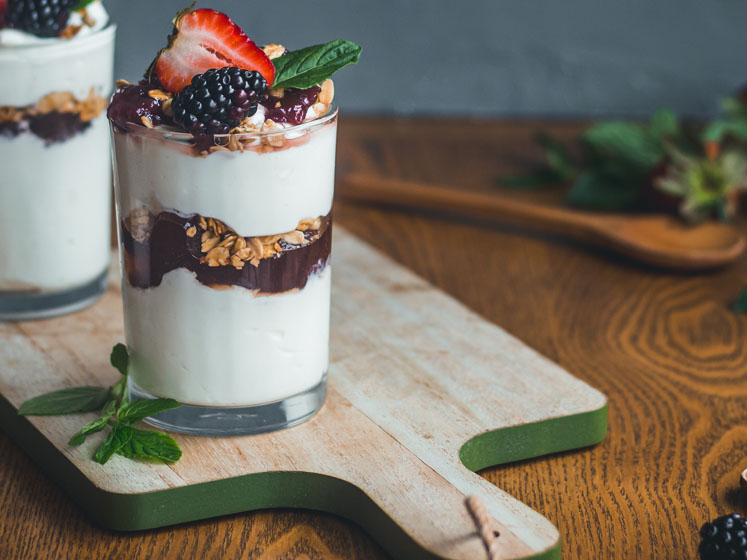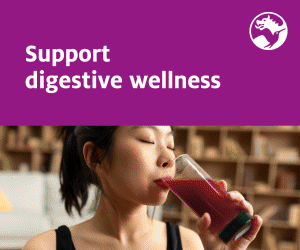Consumers expect more from their favourite products, not only in terms of offering them choices that are healthier and tastier, but which have also been produced in a responsible and sustainable way. By understanding how behaviours and demands are changing, and the drivers behind these shifts, manufacturers can create products that meet the needs of consumers today and better anticipate how these will evolve in the future.
We’ve identified five of the key trends that we expect to be at the forefront of the food and drinks landscape in 2022 and outlined some of the steps that manufacturers can take to put themselves in a strong position to make the most of these.
Transparency
The clean label movement continues to evolve, moving from all-natural claims to communicating how products are made.1 Increasing numbers of consumers are seeking healthy food and beverage products that they can trust, and they want to know the source of the ingredients in those products. Although the type and origin of ingredients are both important considerations, taste is still the dominant factor impacting buying behaviour.2
Increasingly, it is understood that texture and stability are critical factors when delivering taste. Therefore, it is vital to ensure that they are maintained without the use of what consumers may consider to be artificial products. Our range of ingredient solutions includes clean label options such as CLARIA Functional Clean-Label Starches and PROMITOR Soluble Fibre, which can build back mouthfeel and body when ingredients that provide these functions have been removed.

Sugar reduction
Consumers are looking for ways to get and stay healthy. One recommendation to achieve better health is to reduce the amount of sugar in the diet.3 However, consumers are torn between reducing sugar and maintaining a great taste experience.4
Reformulating products to reduce sugar without losing the qualities that make them so loved by consumers can be a difficult balancing act for manufacturers. There are many sensory and technical aspects that need to be considered, such as sweetness, texture, bulking and mouthfeel.
Our comprehensive range of sweeteners helps to compensate for the lost sweetness when sugar is removed or reduced, and our range of texturants, including clean label options, can help build back other important sensory aspects such as mouthfeel and body, which are often missing from reduced calorie products. Additionally, they can overcome processing challenges that are created by removing calories from formulations.
Plant-based
During the past few years, plant-based food and drink has become more than just a trend. It’s no longer just for those observing a vegan diet and a wide range of options is now accessible to everyone. Research has found that approximately 50% of the people in Germany, the UK and the US have tried plant-based alternatives to meat, whereas more than one in ten consumers across the UK and US label themselves as flexitarian.5,6
There are a number of drivers behind the increasing popularity of plant-based food. For some, animal welfare remains the primary reason, but environmental concerns are increasingly becoming a factor; others simply want a healthier diet and see eating plant-based food as the best way to do this.

And, of course, there is the simple fact that people think it tastes good. The traditional image of bland, tasteless, mushy vegetables has truly been consigned to the past and the market is constantly expanding with new innovations.
At Tate & Lyle, the majority of our ingredients are plant-based. We have a extensive toolbox of ingredient solutions that are designed to help manufacturers tap into the plant-based trends, including our plant-based protein stabiliser systems.
Gut health
The benefits of a healthy gut are wide-ranging; it supports the normal functioning of the body’s immune and digestive systems and has even been linked to having a positive impact on mood and emotional well-being.7 Fibre helps to support gut health and consumers are interested in getting more of it in their diet.
Almost a third (31%) of European consumers plan to eat more fibre in the next 12 months, so there’s a real opportunity for food and beverage manufacturers to tap into.8
People are beginning to become more aware of the type of foods that can help them to increase their fibre intake, such as products with legumes and wholegrains. But we also know that people don’t want to make significant changes to their diet or compromise on their favourite foods. Fibre fortification can enable manufacturers to increase the fibre content of their products without losing the taste and texture qualities that consumers love.
Better-for-you snacking
Despite social distancing and reduced opportunities for on-the-go consumption, almost half of consumers (46%) say they snacked more during the pandemic … and it’s continuing to be an important eating occasion. Almost six in ten consumers (58%) say their snacking habits will continue even after the pandemic ends.
As people increasingly prioritise their health, they are looking for snacks that offer a nutritional boost, so manufacturers must keep this in mind when formulating new snacks, whether it’s reducing calories or enriching products with functional ingredients.9

Reducing sugar without sacrificing taste, adding fibre while also giving consumers the taste and texture they enjoy, and maintaining the shape, texture and integrity of snacks all require the right ingredients and processing knowledge. The Tate & Lyle team is working closely with all of our customers to help them achieve this goal with our broad portfolio of ingredient solutions.
Convenience
Whether it’s products that save time and effort during preparation or lower cost options that align with financial constraints, we’re seeing a large new trend in the need to cater to busy, stressful lives. Eighty three per cent of global consumers are influenced by how well a product or service aligns with their time and money constraints, so this should be a key consideration for manufacturers.
Despite stress and a lack of time, consumers are still discerning and continue to expect their food and beverages to be prepared in ways that reflect their values regarding health and sustainability. And, of course, it’s important that they deliver in terms of stability, consistency, integrity and a long shelf-life.
Looking ahead
We cannot predict with certainty what the remainder of 2022 will bring. But, if consumer behaviour continues to shift in the same direction we are seeing, we expect these trends will be here to stay, not only this year but during the coming years. For manufacturers, there will be a renewed focus on whether their products are well placed to keep up with these new demands, which may mean exploring new formulations.
Although these trends should be front of mind, it is vital that any changes made to recipes do not affect the qualities that consumers know and love. At Tate & Lyle, our team of experts can help customers across different categories to find bespoke solutions using our holistic toolbox of ingredients to quickly respond to new consumer trends. There is a fine balance to be struck, but there are rewards for manufacturers that are able to do so.
References
- Tate & Lyle, proprietary research: 84% “always” or “sometimes” read ingredient labels, globally (2020).
- Tate & Lyle, proprietary research: Global Consumer Ingredient Perception Research, nine countries, 3002 consumers (November 2017).
- www.who.int/elena/titles/guidance_summaries/sugars_intake/en/.
- International Food Information Council Foundation, 2021 Food & Health Survey, 58% of consumers say healthfulness has an impact on buying food and beverages (April 2020).
- www.theguardian.com/environment/2021/jan/05/veganuary-record-number-people-pledge-eat-vegan-food-january.
- https://yougov.co.uk/topics/food/articles-reports/2021/05/31/what-making-flexitarians-us-and-uk-shift-towards-m.
- www.health.harvard.edu/blog/gut-feelings-how-food-affects-your-mood-2018120715548.
- Tate & Lyle, proprietary research: Global Consumer Ingredient Perception Research, 14 countries (2020).
- FMCG Gurus, 55% of global consumers say that they expect snacks to offer a nutritional boost (January 2021).




